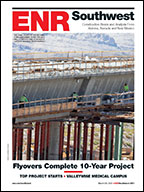The Environmental Protection Agency has issued final rules and proposed others that it says will reduce air pollution from paper mills, powerplants and other industrial facilities and also make them more efficient by clarifying when plant upgrades also require new pollution control equipment.
The regulations, announced Nov. 22, deal with "New Source Review" requirements under the Clean Air Act. Much of the long NSR debate has centered on coal-fired powerplants. For that industry, by far the more important of EPA's two actions is its proposal to change the definition of "maintenance, repair and replacement" work. EPA is proposing to exempt from NSR requirements maintenance work that falls below a dollar threshold. The benchmark would vary by industry, and range from 0.5% to 20% of plant replacement cost. EPA isn't specifying in its rule which percentage would apply to individual industries.
The second part of the proposal would provide that new equipment that is "functionally equivalent" of the gear it's replacing would be considered routine maintenance and thus not subject to NSR. The benchmark would be cost--if the expense of the new equipment falls below a threshold, it would be judged routine maintenance.
Judging from comments from the electric utility industry, EPA's proposal isn't likely to make the market outlook much clearer for engineers and contractors who do powerplant upgrade work, such as designing and installing scrubbers. Electric utility companies said they were disappointed by EPA's proposal. "We're pleased that the agency has finally decide to move the ball down the playing field with respect to this process, says Dan Riedinger, a spokesman for the Edison Electric Institute. But he adds, "We are disappointed and frustrated that EPA stops well short of embracing a specific blueprint to actually address our concerns."
Jeffrey Holmstead. EPA assistant administrator for air and radiation, says the agency will take comments on the proposed maintenance definition for 60 to 90 days. He adds that the earliest the proposal would be made final would be fall of 2003.
The other part of EPA's announcement--the final rule--primarily applies to non-utility upgrades. Holmstead says that the final rules "will result in greater emission reductions than we expect to have with the current program."
The final rules have four main provisions:
- Emissions caps for each facility, dubbed "Plantwide Applicability Limits." EPA says if a company operates its plant within those caps, it will be allowed flexibility to modify their operations without triggering NSR.
- "Clean Units." EPA will let plants with best available pollution control technology have NSR flexibility.
- New ways of calculating whether a plant change will lead to a major boost in emissions, thus triggering NSR.
- Certain pollution control and prevention projects will be able to go forward when a plant owner submits a notice to the permitting agency, instead of waiting for a permit approval
The EPA announcement drew praise from groups including labor unions. Mike Draper, vice president of the carpenters' union's Western Region, says that current NSR rules "are strangling incentives to modernize and reduce plant emissions--the exact objectives the program was created to achieve."
Environmental groups denounced EPA's plan. Philip Clapp, president of the National Environmental Trust, blasted the plan, saying, "This is the Bush administration's worst assault on public health so far."



Post a comment to this article
Report Abusive Comment